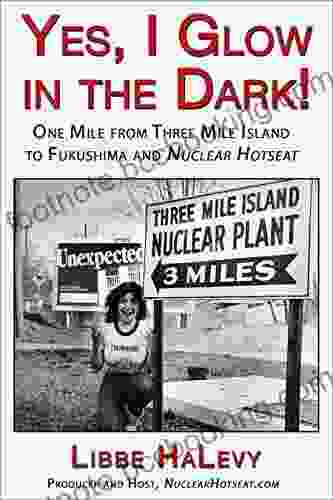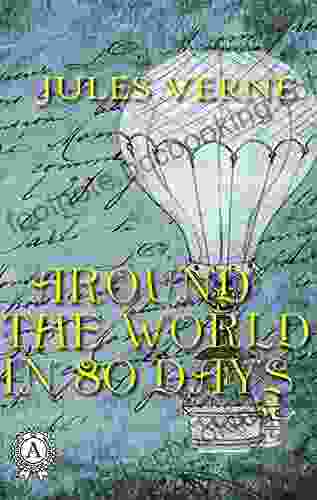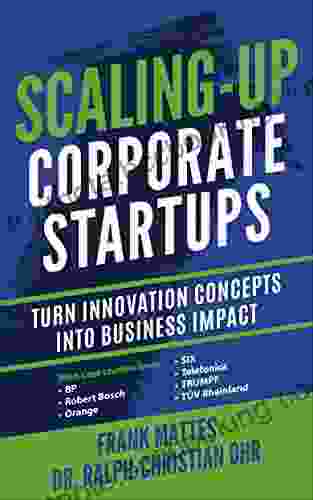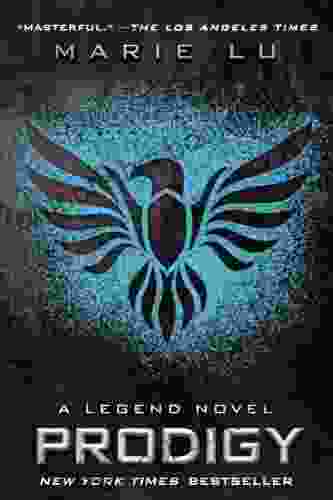Yes Glow In The Dark: The Ultimate Guide to Biofluorescence

Have you ever wondered what it would be like to see the world in a whole new light? With Yes Glow In The Dark, you can! This book is the ultimate guide to biofluorescence, the amazing phenomenon where living things emit light.
4.7 out of 5
| Language | : | English |
| File size | : | 2185 KB |
| Text-to-Speech | : | Enabled |
| Screen Reader | : | Supported |
| Enhanced typesetting | : | Enabled |
| Word Wise | : | Enabled |
| Print length | : | 213 pages |
| Lending | : | Enabled |
From the glowing jellyfish that light up the ocean depths to the fireflies that dance through the night air, biofluorescence is a truly magical sight. And it's not just animals that glow—plants, fungi, and even bacteria can produce their own light.
In Yes Glow In The Dark, you'll learn everything you need to know about biofluorescence, including:
- The history of biofluorescence
- The biology of biofluorescence
- The different types of biofluorescence
- The applications of biofluorescence in art, science, and technology
With stunning photography and illustrations, Yes Glow In The Dark is a must-have for anyone interested in this fascinating subject. So what are you waiting for? Dive into the world of biofluorescence today!
Chapter 1: The History of Biofluorescence
The history of biofluorescence dates back millions of years, to the first organisms that evolved the ability to emit light. These early biofluorescent organisms were likely simple bacteria that used their light to attract prey or mates. Over time, biofluorescence evolved in a wide variety of organisms, including jellyfish, fish, insects, and plants.
The first recorded observation of biofluorescence was made by Aristotle in the 4th century BC. Aristotle described a glowing sea creature that he called the "lychnoscope." In the centuries that followed, other scientists made similar observations of biofluorescent organisms. However, it wasn't until the 19th century that scientists began to understand the biology of biofluorescence.
In 1852, the German scientist Heinrich Rose discovered that the jellyfish Aequorea victoria produced a green fluorescent protein (GFP). GFP is the most common biofluorescent protein, and it has been used extensively in scientific research. In 2008, three scientists were awarded the Nobel Prize in Chemistry for their work on GFP.
Chapter 2: The Biology of Biofluorescence
Biofluorescence is caused by a chemical reaction that occurs within the cells of living organisms. This reaction involves a protein called a fluorophore. When a fluorophore is exposed to light, it absorbs the light energy and then emits it as a different color of light. The color of the emitted light depends on the type of fluorophore.
There are many different types of fluorophores, each with its own unique emission spectrum. Some of the most common fluorophores include:
- GFP (green fluorescent protein)
- RFP (red fluorescent protein)
- BFP (blue fluorescent protein)
- YFP (yellow fluorescent protein)
- CFP (cyan fluorescent protein)
Fluorophores can be found in all types of living organisms, from bacteria to humans. In many cases, fluorophores are used to perform specific functions, such as attracting prey, deterring predators, or communicating with other organisms.
Chapter 3: The Different Types of Biofluorescence
There are many different types of biofluorescence, each with its own unique characteristics. Some of the most common types of biofluorescence include:
- Fluorescence: This is the most common type of biofluorescence. It occurs when a fluorophore is exposed to light and then emits light of a different color.
- Phosphorescence: This type of biofluorescence occurs when a fluorophore continues to emit light after it has been exposed to light. Phosphorescence is often used to create glow-in-the-dark objects.
- Chemiluminescence: This type of biofluorescence occurs when a chemical reaction produces light. Chemiluminescence is often used in fireflies and other organisms that produce light to attract mates.
- Bioluminescence: This type of biofluorescence occurs when light is produced by a living organism. Bioluminescence is often used to communicate with other organisms or to attract prey.
Chapter 4: The Applications of Biofluorescence in Art, Science, and Technology
Biofluorescence has a wide variety of applications in art, science, and technology. In art, biofluorescence is used to create glowing paintings, sculptures, and other works of art. In science, biofluorescence is used to study the biology of living organisms and to develop new medical treatments. In technology, biofluorescence is used to create new types of lighting and displays.
Some of the most common applications of biofluorescence include:
- Art: Biofluorescence is used to create glowing paintings, sculptures, and other works of art. These works of art can be used to create unique and eye-catching displays.
- Science: Biofluorescence is used to study the biology of living organisms. For example, scientists can use biofluorescence to track the movement of cells or to identify different types of bacteria.
4.7 out of 5
| Language | : | English |
| File size | : | 2185 KB |
| Text-to-Speech | : | Enabled |
| Screen Reader | : | Supported |
| Enhanced typesetting | : | Enabled |
| Word Wise | : | Enabled |
| Print length | : | 213 pages |
| Lending | : | Enabled |
Do you want to contribute by writing guest posts on this blog?
Please contact us and send us a resume of previous articles that you have written.
 Book
Book Novel
Novel Page
Page Chapter
Chapter Text
Text Story
Story Genre
Genre Reader
Reader Library
Library Paperback
Paperback E-book
E-book Magazine
Magazine Newspaper
Newspaper Paragraph
Paragraph Sentence
Sentence Bookmark
Bookmark Shelf
Shelf Glossary
Glossary Bibliography
Bibliography Foreword
Foreword Preface
Preface Synopsis
Synopsis Annotation
Annotation Footnote
Footnote Manuscript
Manuscript Scroll
Scroll Codex
Codex Tome
Tome Bestseller
Bestseller Classics
Classics Library card
Library card Narrative
Narrative Biography
Biography Autobiography
Autobiography Memoir
Memoir Reference
Reference Encyclopedia
Encyclopedia Patrick J Sloyan
Patrick J Sloyan Joyce Milton
Joyce Milton John Monyjok Maluth
John Monyjok Maluth Ford Fry
Ford Fry Peggie Hall
Peggie Hall Kieran Larwood
Kieran Larwood Karen Speerstra
Karen Speerstra Frank J Sileo
Frank J Sileo Jim Davidson
Jim Davidson Terry Hill
Terry Hill Frank Richmond
Frank Richmond Peter Chapman
Peter Chapman Mark Whitaker
Mark Whitaker Fourth Edition Kindle Edition
Fourth Edition Kindle Edition Paul A Offit
Paul A Offit W T Larned
W T Larned Maria Rickert Hong
Maria Rickert Hong Mavis Gock Yen
Mavis Gock Yen Joyce Scott
Joyce Scott Markar Melkonian
Markar Melkonian
Light bulbAdvertise smarter! Our strategic ad space ensures maximum exposure. Reserve your spot today!
 Dan BellFollow ·5.1k
Dan BellFollow ·5.1k Gerald ParkerFollow ·19k
Gerald ParkerFollow ·19k Cade SimmonsFollow ·9.1k
Cade SimmonsFollow ·9.1k Beau CarterFollow ·17.7k
Beau CarterFollow ·17.7k Marc FosterFollow ·3.2k
Marc FosterFollow ·3.2k Leon FosterFollow ·10.3k
Leon FosterFollow ·10.3k Greg CoxFollow ·6.1k
Greg CoxFollow ·6.1k Devon MitchellFollow ·11.8k
Devon MitchellFollow ·11.8k
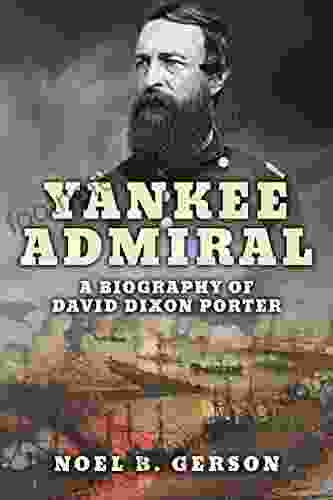
 Howard Blair
Howard BlairHeroes and Villains from American History: The Biography...
David Dixon...

 Felipe Blair
Felipe BlairAn Informal History of the 1920s: Uncovering the Roaring...
The 1920s, an era...

 Howard Blair
Howard BlairHow a Peculiar Victorian Zookeeper Waged a Lonely Crusade...
In the enigmatic world of Victorian...

 Harold Powell
Harold PowellMemoir of Food, Wine, and Love in Italy: A Culinary...
Prepare your senses...
4.7 out of 5
| Language | : | English |
| File size | : | 2185 KB |
| Text-to-Speech | : | Enabled |
| Screen Reader | : | Supported |
| Enhanced typesetting | : | Enabled |
| Word Wise | : | Enabled |
| Print length | : | 213 pages |
| Lending | : | Enabled |


